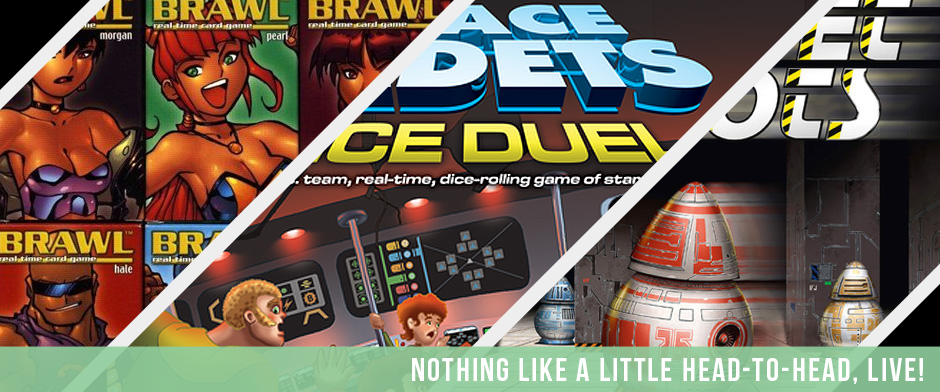Every wondered what real-time gaming is? Well, wonder no longer. For those not familiar with the concept of real-time table top gaming here is the short and sweet of it:
“Real-time games often allow for players to take their turns (or part of their turns) simultaneously. This is in contrast to turn-based games. There are also some Real-time games in which there is a consequence if a player does not play their turn in a set amount of time.” — BoardGameGeek
You can also view a video here of real-time games by the Board Game Knights.
Although this is not a very common mechanic used by many board games, it does define a board game when it’s done right. High paced, competitive game play is often sought after in today’s rebirth of board games and what better way to build excitement than with a game where timing and pace could secure your success… or seal your fate. I’ve come across a few games like this not many enough to remember how fun they are. Spoons is one game that comes to mind, and concepts like musical chairs promptly follows. Other games that come to mind right away are Scrabble® Slam, Spot It, and to some extent Pictureka. Other common Real-Time board games include Brawl, Space Cadets: Dice Duel and Ricochet Robots. This concept is almost effortless to pull off in digital gaming as it is synonymous with multi-player games. Achieving this on a game board, however, could prove to be a little trickier.

Looking at card games, as a standard form of multiplayer tabletop gaming, one can see that cards can naturally be used to create a Real-Time game. I also think dexterity games to some degree could lend themselves to Real-Time gaming. After pondering the thought of simultaneous play some time ago I had come up with a game called Junk Mail: The card game. Junk Mail is essentially an email management game where 2-4 players play at the same time. The goal of the game is to keep your inbox from overflowing. I know, sounds kinda lame doesn’t it? So I thought initially. When I went back and reviewed my initial notes written years ago, the primary goal was to create a game that can;
- be multiplayer without limiting a 3rd or 5th player,
- be played simultaneously,
- be played solitaire.
Though it may not have a strong marketing value on theme or originality it does promise to have the makings of a great party/filler game that is both intense and rewarding. Players can bury themselves in emails or chain link their opponents into dealing with junk mail, chain letters and spam. Still in it’s infancy, the games core mechanisms are still being fleshed out. The speed at which each player plays at can vary, but when goals are achieved a player can impose restrictions on their opponent or reward themselves with bonuses. Both inboxes are visible so each player can keep check — and more importantly keep track — of their opponents inbox management. Players draw cards from a fixed, shuffled deck, organize the cards by types and follow actions dictated by the cards. There are 5 inbox slots, 1 archive slot, 1 trash bin and 1 outbox slot. By placing a card in the outbox slot, your opponent has to use those cards. Now, they can use them as they come or they can let them pile up before using them. It’s up to the player to manage their inbox, but more on this when the game is put into actual development. You’ll be able to read about this and many more games on my devlog.
I see a place in any board game bookshelf or game room where a Real-Time game can fit, and I don’t doubt there isn’t an open-minded board game player out there who wouldn’t give a Real-Time game a good effort. For the casual gamer such as myself, it’s a good way to pass the time with friends and family and ensure that everyone is getting in on the fun as the fun is actually happening. Party games truly do benefit from this mechanic, so the next time your designing or buying a game for a group of people to play that needs to be light, fast and fun, think Real-Time.

